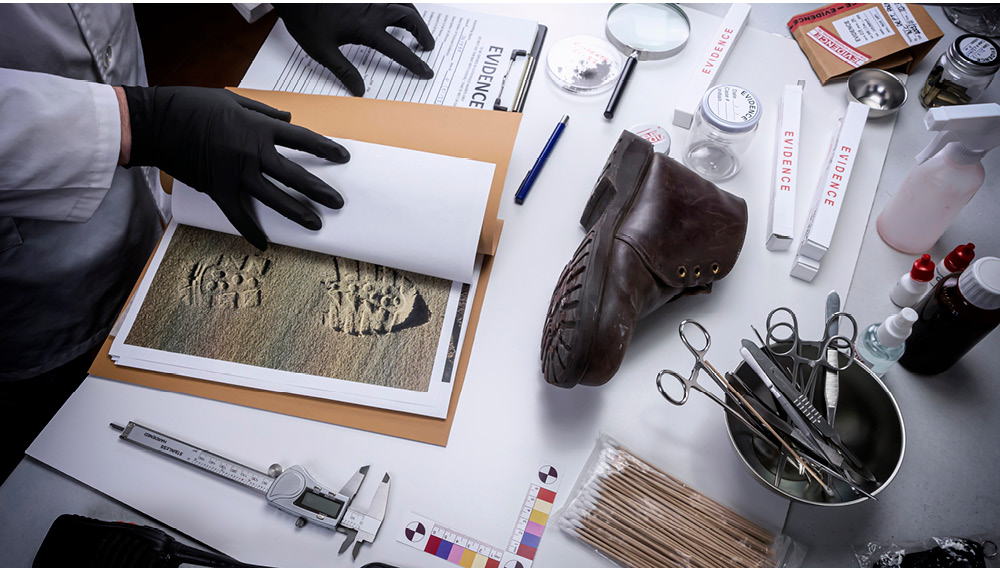The Role of Forensics in Crime Solving

It’s 3 o’clock in the morning and an alarm starts ringing in the art museum. By the time the police arrive, a priceless painting has been stolen. The gallery is a mess. Shards of glass, dirty footprints, fabric scraps, and a few strands of hair are the only clues that remain. The art world despairs—but detectives on the case don’t because they know that even this bloodless crime scene contains all the evidence they need to track down the thief.
As long as crimes have been committed, people have been using crime scene evidence to help solve them. Today, with increasingly detailed analysis tools at scientists’ disposal, forensics is a powerful asset in not only catching criminals but also providing insight into the motives and methods behind the crime.
What Is Forensic Science?
Forensic science uses scientific analysis to examine criminal evidence and support decision-making in a court of law. Because “evidence” can range from the biological, like hair and blood, to the digital, such as financial records and online search histories, to the physical, like tire tracks and handwriting, forensic science employs a variety of disciplines that include toxicology, molecular biology, chemistry, and even information technology.
During an investigation, forensic specialists carefully collect and preserve crime scene evidence for testing. After an investigation, they are also frequently called upon to present their findings in court.
How Can Using Forensics Help Solve a Crime?
Forensics can help solve a crime by finding and analyzing everything a culprit leaves behind. This trail of impact creates a wealth of evidence, large and small, that can be invaluable in an investigation.
For centuries, crime scene investigations were limited to the senses. This meant that only immediately observable clues, like footprints and murder weapons, were solely what we had to go on. Lacking ways to accurately capture or analyze evidence, crime scene hygiene was an afterthought, with members of the public and careless investigators trampling over what today would be valuable evidence.
Modern forensic scientists still rely on the observable clues, but the invisible is what often ultimately breaks a case. Three of the most commonly used forensic techniques are DNA analysis, fingerprint matching, and forensic psychology. In the example of our art heist, investigators could look at the damage in the gallery to figure out what tools the thieves used to break in. Hair and fingerprints could be collected for DNA evidence to test against any potential suspects. Footprints and fibers found at the scene could also be potentially matched to what the criminals were wearing.
DNA Analysis
Of these three forensic methods, DNA analysis is the most recently developed, though, and thanks to television shows like “CSI: Crime Scene Investigation,” it’s probably the technique most people think of first. DNA was only able to be fully sequenced in 1977, which was the first step in being able to identify individual people by their genetic material. This eventually led to the pioneering use of DNA in a successful U.S criminal conviction in 1987.
Usable DNA can be collected from a sample as small as the trace amounts of saliva on the rim of a glass, and some forms of DNA can be viably stored for years. Famously, the Golden State Killer was caught more than 40 years after his first known murder by matching DNA from a distant family member.
Fingerprint Matching
People have long recognized that our fingerprints are unique. There is even evidence of fingerprints being used to sign clay tablets in ancient Mesopotamia. The first person to be found guilty of a crime using fingerprint evidence is believed to be Francisca Rojas of Buenos Aries in 1892. Fingerprints are left on smooth surfaces by the natural oils on our skin, and they can be captured by “dusting” with fine powder, a technique developed in the 19th century that forensics experts still use today.
Forensic Psychology
Forensic psychologists try to answer the eternal question of why people act the way they do and assess the unseeable clues within a person’s mind during the time surrounding a crime. Forensic psychologists bridge the gap between mental health and legal procedures, often serving as expert witnesses in court proceedings. They interview witnesses, defendants, and victims to analyze behavior, assess mental states, and provide insights to inform legal decisions like sentencing and treatment recommendations.
What Is Cyber Forensics?
Was the museum guard searching “how to disable a security camera” just days before the theft? Did one of the suspects receive a large bank transfer from an unscrupulous art collector? Did a suspected getaway car’s GPS place it near the museum the night the painting was stolen? These are all questions we can answer today with cyber forensics.
As more crime moves online, digital evidence is an increasingly important part of criminal investigations. Cyber forensic specialists extract data from computers, cellphones, and other electronic devices, as well as monitor network traffic and potentially malicious code.
Are you interested in starting a crime-fighting career of your own? Excelsior has degree programs in criminal justice and cybersecurity perfect for future forensics pros.




